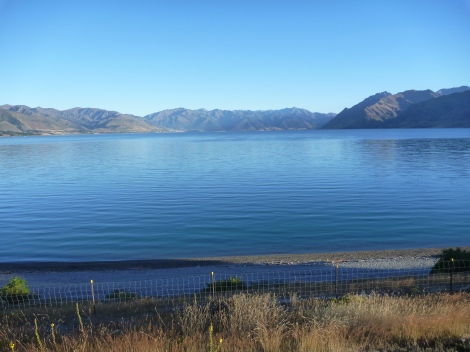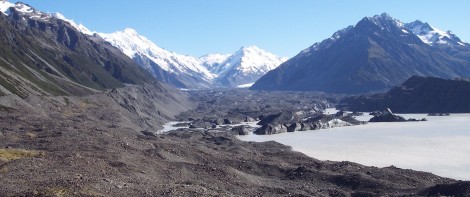
Scientists and artists require a lot of the same skills – work with different materials, be able to work independently and with others, be able to communicate your thoughts to others. It seems to me that science and art could benefit greatly from one another.
The photo above is Lake Hawea in the South Island of New Zealand. This lake exists here because of:
- Faults weakening the bedrock
- Rivers exploiting that weakness and carving a river valley
- Glaciers occupying this valley many times (possibly eight times) in the last million years.
The glaciers help to scrape the ground clean of sediment, and erode the bedrock, widening and deepening the valley. The last time a glacier occupied this valley, about 20,000 years ago, it deposited a large moraine (ridge of glacially transported and deposited rocks and sand and boulders). As the climate warmed and the glacier melted, the melt water was dammed by this large moraine, and flowed through a small outlet river. Today, there are no remaining glaciers in this valley, only small patches of snow that can last into the summer near the tops of the mountains.
Imagine white glacier ice with rocks on top flowing in from the right and left valleys at the head of this lake. Imagine a cold wind coming off the ice toward you, icebergs floating in the lake, and any plants near you on the moraine are cold-loving alpine plants, lichens and tussocks. There were no humans in New Zealand at this time, which means there were no mammals at all except the native bat.

